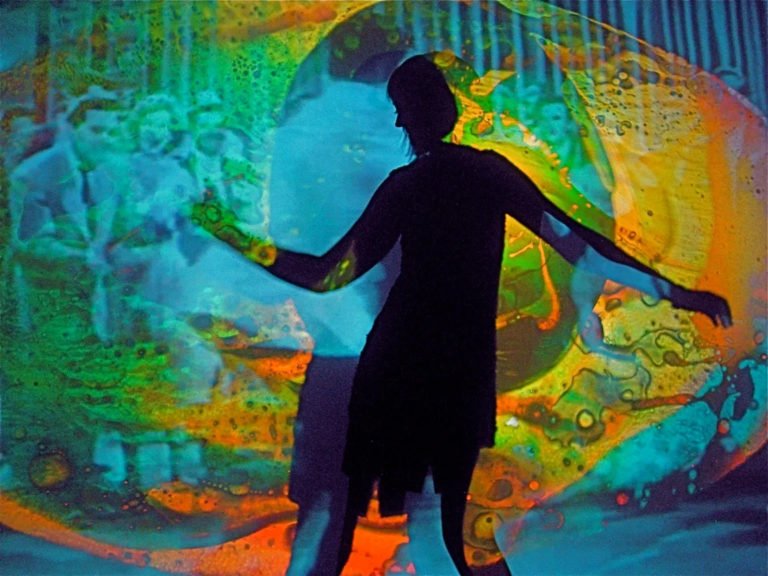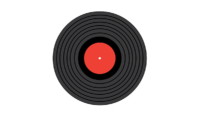The Changing Face of Psychedelia, Part 1

Psychedelia was once about marmalade skies, wonky strangeness in the middle of otherwise standard pop songs, kaleidoscopic oil projections in sweaty underground clubs and, of course, the magisterial Tomorrow Never Knows. That’s what the word psychedelia will still mean to a lot of people, but nowadays there’s a lot more to it than that. In a manner of speaking, psych grew up and left home.
After the initial blossoming of late-sixties Flower Power, psychedelic music went out of fashion, or at least it might have seemed that way. What actually happened was that it spilled out of pop music and into other musical forms. Progressive rock might not have developed if psychedelia hadn’t encouraged rock bands old and new to expand their musical palette and learn a few more time signatures in an attempt to blow people’s minds. The Europeans embraced it, sent music into the stratosphere and induced trance-like states with their motoric rhythms, the folk world cast a spell over it and turned it wyrd, Stevie Wonder and George Clinton took their soulful and funky innervisions to the outer reaches, and jazz grabbed it by the be-bops and used it in a Bitches Brew. It was this rapid evolution in contemporary music that made the early 1970’s one of the most exciting periods to date.
And then along came punk and banished psych forever. Obviously, that isn’t quite the case, but the influence of psychedelia did seem to disappear from view for a while, dismissed by the punk intelligentsia as a hiccup in musical history, a remnant of a time that needed to be erased from the memory. But those at the forefront of the punk movement didn’t all feel that way. The Damned were fans of Syd Barrett – who had by then gained mythical status as a psych pioneer and flawed genius – and tried to get him to produce their second album, before plumping for fellow Pink Floyd member, Nick Mason. Stateside there was the hazy and hypnotic drone of Suicide, and those luminaries of the Bromley contingent, Siouxsie and the Banshees, were clearly in thrall to the psychedelic era, it’s influence steadily creeping into their music, through the albums Kaleidoscope, Juju and culminating in their fifth album, A Kiss in the Dreamhouse.
In that sense, it’s tempting to see a band like the Banshees as a Trojan Horse that smuggled psych into the Punk fortress. The reality is that psychedelia never really went away, it probably just seemed that way at the time. As with prog rock, and in fact most musical movements that have come and gone, including punk, there is a pure form of psychedelia in existence today, with bands like King Gizzard & The Lizard Wizard and The Psychedelic Porn Crumpets performing an authentic but albeit updated version. New waves of traditional psych roll in every so often, in the form of scenes like The Paisley Underground and Baggy, but it’s those other, less recognisable forms that are more interesting. Kosmische first emerged at the turn of the 70’s, with the likes of Ash Ra Tempel, Tangerine Dream and Brainticket producing mind-bending music that had an ambience and an out-there energy that can only be described as otherworldly. It was indeed cosmic music, immersive sonic atmospheres to escape to and get lost in; to truly tune in to and drop out.
It’s that otherworldly, escapist element that began to re-appear in other musical styles through the years, call it a sense of otherness. It had nothing to do with drugs necessarily – you didn’t have to be high to enjoy it – it was the sound itself that created a sense of elation, a natural sonic high. Acid house was perhaps the first musical movement that was psychedelic but wasn’t recognisable as such, in that it wasn’t rock, and it wasn’t like any other pop music that had been heard before. It was unquestionably psychedelic in that it had that euphoric quality – although the enjoyment of it still had a lot to do with the drugs. Meanwhile, back in the rock and pop sphere, Dream Pop had emerged at around the same time, and this was a sound that had everything to do with otherness and elation. Then, as a development of acid house and rave, the escapist euphoria took a deep breath, slowed its heart rate and re-appeared in the form of IDM, then bonded with hip-hop and dream pop to form Trip-hop. Dream pop would also spawn the louder, more abrasive style we now know as Shoegaze. This was a sound that still had the otherness and euphoria, but also something darker.
Which takes us back to that psych-free period of the mid-to-late ‘70’s; psychedelic music hadn’t disappeared at all. During the punk and New Wave years all that really happened was that it switched to another channel, finding sanctuary in the music being produced for film and TV. There was the infamous ‘Stargate’ sequence from 2001:A Space Odyssey for a start, and Children’s fantasy series like The Tomorrow People or Children of the Stones, along with the dystopian drama series such as Survivors and Quatermass, were creepy enough in themselves but made far more unsettling by the accompanying sound effects and theme music. It could be argued that it wasn’t psychedelic in any way, or rather that the dark ambience of those soundtracks was the dark side of psychedelia, a shadow that often threatened to show itself but had always been kept under wraps. But it was still otherworldly, still escapism, just the bad trip equivalent. This sinister alter ego had been lurking for some time, however. The BBC Radiophonic Workshop had been producing sinister themes and effects since the 1950’s, Pink Floyd’s debut The Piper at the Gates of Dawn was as dark as it was whimsical, and then you only have to listen to the Tangerine Dream album Zeit for a few minutes, or sit through the ‘Stargate’ sequence again, to realise that space might not be the tranquil place you’d previously imagined it to be, and is indeed filled with dark matter. Again, it is an escape to another world but not one that’s necessarily any safer than the one you’ve just dropped out of.
And it was this combination of light and dark, the sinister and the serene, that extended into post-punk and then goth. Thanks to the likes of the Banshees, Bauhaus and Echo & the Bunnymen, psych had effectively disguised itself with a trench-coat and back-combed hair. But it was an album released toward the end of 1983 that signalled its future. Head Over Heals was the second album released by Cocteau Twins, a Scottish band whose debut, Garlands, released the previous year, had been criticised as being too derivative of Siouxsie & the Banshees. The follow-up was an altogether different proposition. From the portentious opening bars of When Mama Was Moth to the swirling crescendo of Musette and Drums, it was like the forces light and dark facing off against each other, and the result was something completely new, but undoubtedly psychedelic. It was like a sonic storm, which doesn’t do it justice as a description, but then it was one of those albums that had music journalists of the time scrabbling at their mental dictionaries for new words and phrases to describe it. Ethereal, tempestuous, celestial, cosmogorical, a cavernous, cacophonous maelstrom. It was all of those things, and from it new sounds would emerge. Psych was re-born.
In the next instalment: Dream pop, Shoegaze, Trip-hop, Hypnagogic pop and beyond…



